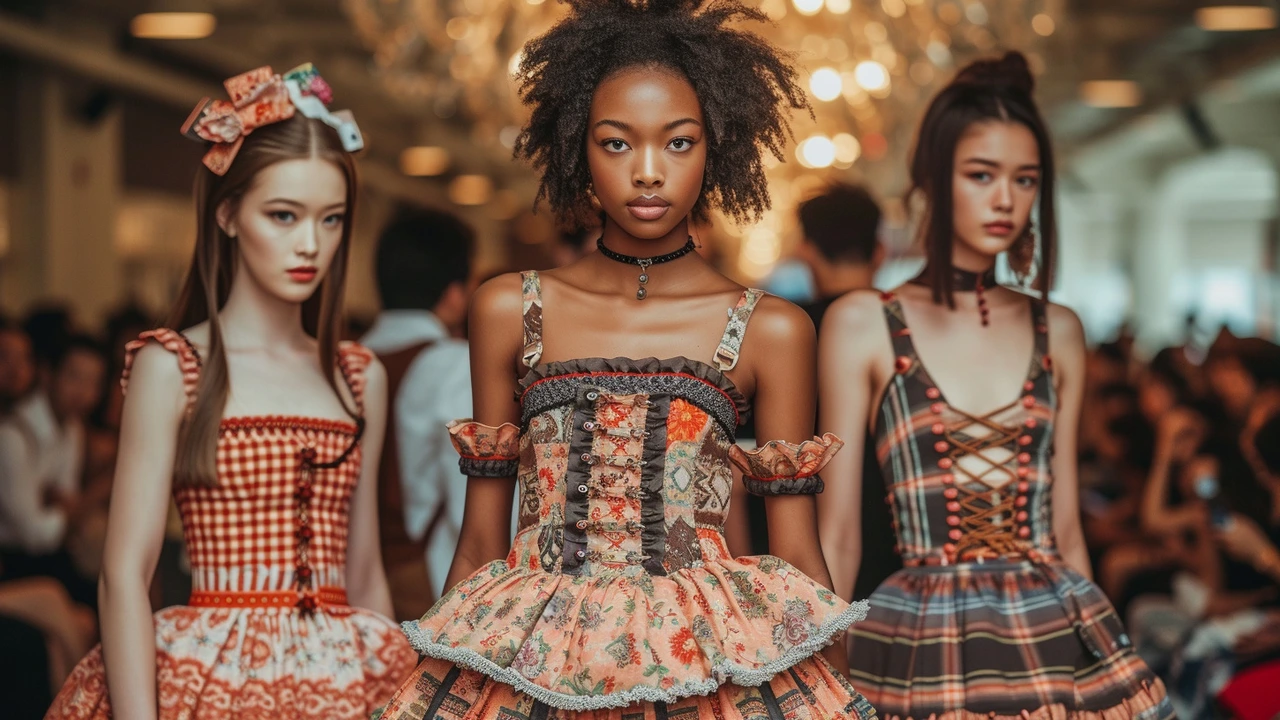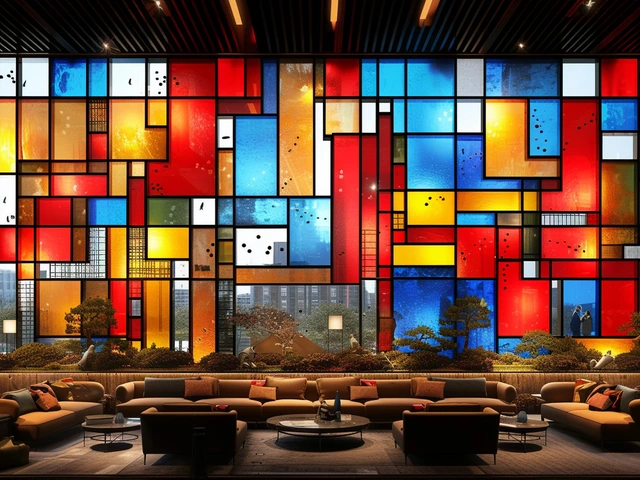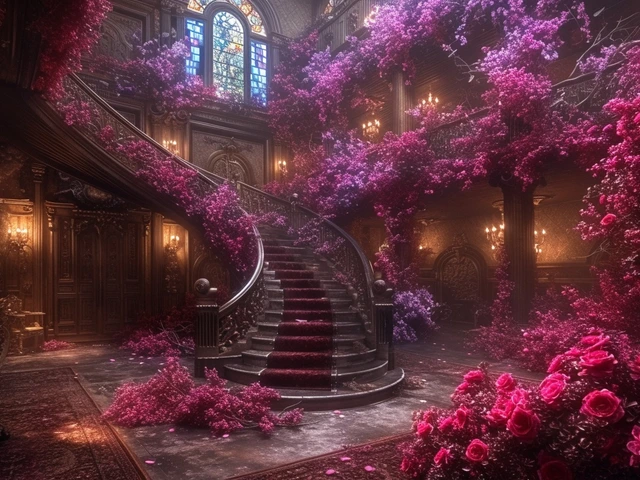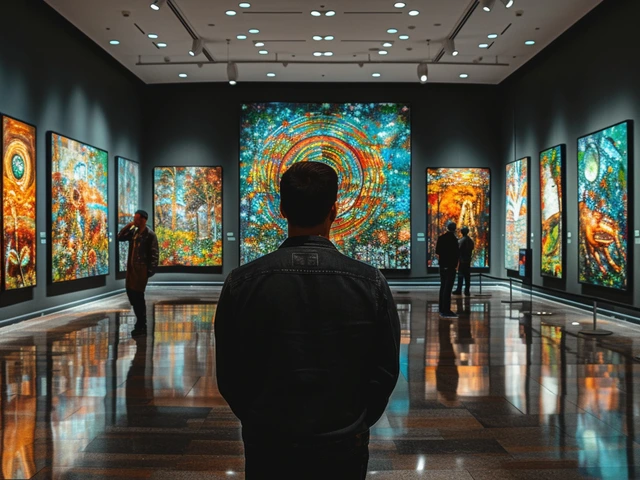Finding Rococo's Hidden Finesse
Now imagine this for a moment: it's a picturesque afternoon, the gilded sun is lazily sprawled out in its azure encasement and you, yes you, are lounging in a chateau nestled amidst the lush greenery of 18th century France, your senses tickled by the elaborate artistic expressions of the Rococo era. You see, the Rococo epoch, or rather, the late Baroque period, spanning the early 18th century, was where art and architecture lost themselves in a delirious romance, crafting an era that reeked of opulence and grandeur.
Taking a time machine to this enchanting epoch, you'd find yourself ensnared in the undertow of the rich cultural and aesthetic heritage that washed over Europe, especially France, where the Rococo movement first fluttered its ostentatious wings. From the flamboyantly adorned palaces & halls, the highly ornamented interiors and houses of the nobility, to the breathtakingly designed gardens, it was as if every nook and cranny was dipped in the expansive ocean of creativity, a glossy residue of baroque elements left behind.
The Vivacious Va-Va-Voom of Rococo
Rococo's crowning glory was its 'Va-Va-Voom'. A cheeky term I've coined to encapsulate the vibrant vivaciousness that thrummed the very beat of the Rococo era. And no, my parrot Jazzy didn't inspire it, though her colourful plumage does bear an uncanny resemblance! Anywho, the artistry of this period shied away from the grand religious themes that fuelled the Baroque; instead it frolicked in light-hearted themes taking inspiration from the picturesque beauty of nature and flirtatious, whimsical aspects of life.
Perhaps, the epitome of Rococo art is the works of Antoine Watteau, François Boucher and Jean-Honoré Fragonard. These chaps were the toast of the town in their era, painting landscapes and portraits, doused and dashed with amusing details, curvy forms and creamy colours. They masterfully intertwined a playful and whimsical spirit into their brushstrokes.
The Heartthrob of Architecture: The Rococo Design
The term 'Rococo' is derived from the French word 'rocaille', meaning 'rock and shell garden ornamentation'; and rightly so, because my dear reader, Rococo architecture is not just design, it's a swoon-worthy spectacle! It's a heartthrob crooning sweet melodies of intricate detailing and sinuous curves. They donned their structures with decorative elements inspired by shells, flowers, birds, swirling vines; every nook bursting with visual delight. Understandably, not everyone's cup of tea, but to fans of flamboyancy like me and Scooter, my turtle, it's a feast fit for the kings!
Our time-travelling venture would be incomplete without a visit to the iconic Palace of Versailles, particularly Louis XV’s Petit Trianon and the grandiose Amalienburg hunting lodge in Munich - the pinnacle of Rococo architectural feat, an epitome of Rococo’s love affair with elaborate detail. These structures exhibit a masterful play of light – a characteristic achieved through carefully planned spaces, large windows, mirrors, and white and pastel color themes.
Blending History & Arts: Rococo Furniture & Decorative Arts
If I were to encapsulate Rococo's spirit off the canvas, it would have to be through its furniture and decorative arts. Interestingly, the high-pitched chirps of my parrot, Jazzy come eerily close! Jokes apart, furniture of this epoch was all about the elaborate, refined, and sumptuous. Would you believe they had chairs that looked like they had strayed out of a fairy tale, with shells, flowers and leaves woven into their design? The level of intricate detailing would make even the snootiest of craftsmen revere the passion of the artisans of the Rococo era.
French craftsmen tossed the straight lines and geometric precision of Baroque for the shapely curves of Rococo furniture. They were enamoured by the beauty of the natural world and adorned their creations with playful motifs, ornate carvings and graceful curves that sing a beautiful poetry.
Embracing the Extravagant: Rococo Impact on Modern Design
Fast forward to today, we are still in love with the lingering echoes of the Rococo style. Be it in our wardrobe choices that dance in floral patterns or the bespoke pieces of furniture that find residence amidst our modern architecturally sound homes. Rococo's lavishness and grandeur have found their ways into the 21st century, tweaked and turned to suit our tastes. Oh, the wonders the Rococo influence does! Just look at what it did to my living room. Let's say, it's now less of a living room, more of an homage to the Rococo era - minus the powdered wigs, of course.
Its essence can be felt in intricate jewellery designs, flamboyant fashion, plush upholstery designs, ornate wallpapers and even in eclectic building designs. Rococo's legacy lives on, whispers of its golden age imprinted in the creative minds of artists, fashionistas, designers, and enthusiasts like yours truly.
In conclusion, the Rococo era, as richly textured and flamboyantly full of life as it was, still rings with its vivaciousness in the walls of architecturally sound structures, in the strokes of enthusiastic artists, in the cordial corners of homes strung with its charm, and in the hearts of those who appreciate its language of opulence, playfulness, and whimsy. A travel back in time to Rococo's golden age is nothing short of an enlightening revelation, and as an enthusiast yearning to learn, I can safely say, it's a journey I'd embark on time and time again with gleaming eyes and an eager heart.



